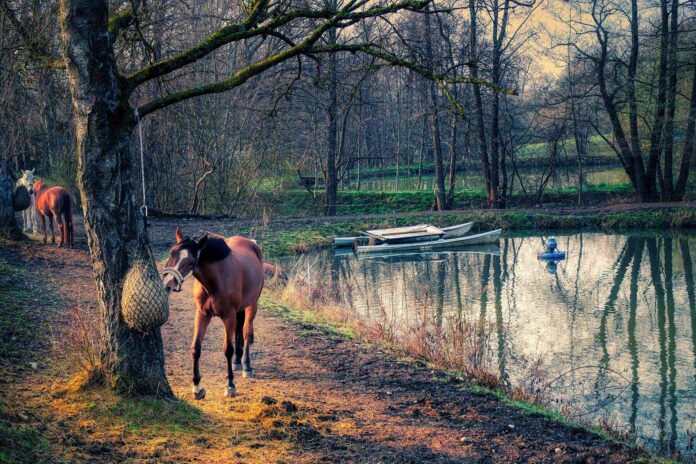Molasses looks like treacle or golden syrup; it’s made from the syrup that is leftover from the sugar production of sugar cane and sugar beets. Read on to find out everything you need to know about feeding molasses to your horse.
What Is Molasses?
Molasses is a by-product of the sugar industry that comes from either sugar cane or sugar beet; when used in horse feeds, it’s more commonly made from sugar cane. This product is a dark brown syrup-like treacle that is rich in simple sugars and is added to horse food in order to make it more appealing to the horse. Although horses’ diets naturally contain higher levels of sugar than oil due to their grass-based diets, a lot of diseases relating to diet that affect domestic horses are linked to sugar and starch. It’s therefore recommended that they be given low sugar and starch diets as this may reduce the risk of inhibiting problems such as colic, laminitis and gastric ulcers.
Why Is Molasses Added to Horse Feed?
Molasses is added to horse feeds to add more sweetness making the feeds more palatable to the horses – sweetness naturally appeals to horses due to the fact grass naturally contains sugar so it is something they have evolved to find palatable. Liquid coatings like molasses may help with the manufacturing process of horse feeds as they help to reduce the amount of broken up grains and fibres that may make the product look dusty by sticking them to the feed instead. This, therefore, also reduces the loss of feed.
Adding molasses to horse feed also makes the feed more appetizing to the horse. Horses are naturally drawn to sweeter flavour, therefore adding molasses to their feeds increases the palatability.
Is Molasses a Carbohydrate?
There are three types of carbohydrates that are distinct in a horse’s diet: simple sugars (glucose, fructose etc.), storage sugars (starch, fructan etc.) and structural polysaccharides (fibre). Molasses contains simple sugars.
The most common sugar is sucrose which is a double sugar consisting of glucose and fructose. Grass contains sucrose which is the greatest source of sugar in many horses’ diets. Plants naturally make sugar to use as energy for growth; any sugar leftover from the requirements of the plant is then stored as fructan in the leaves and stems of plants whereas seeds accumulate starch which would provide energy for the seed to use during germination and growth – assuming it isn’t eaten!
In paddocks, if the grass is grazed regularly then starch levels are kept relatively low as the grass rarely gets the opportunity to go to seed.
Takeaway
Molasses can be a useful addition to horses’ feed but remember to feed it in moderation to ensure the horse doesn’t receive too much sugar in their diet. This is most important for those that are overweight or those with endocrine issues that predispose them to laminitis.














